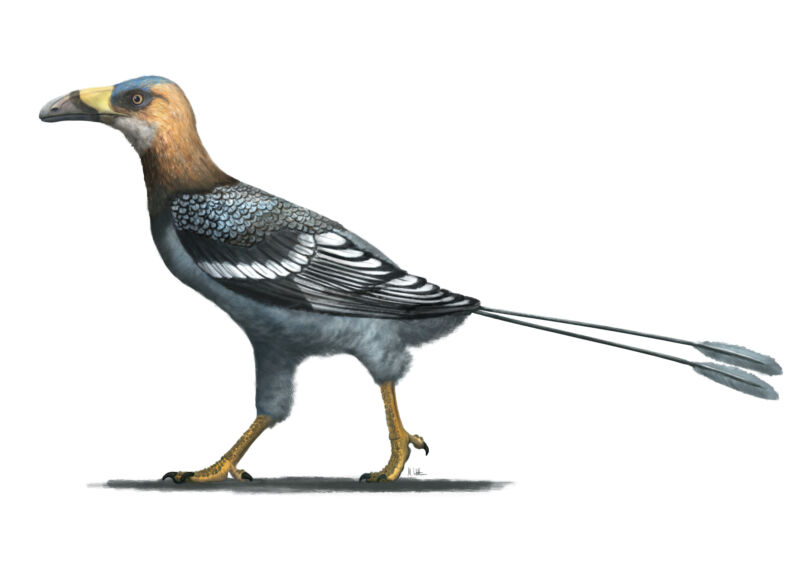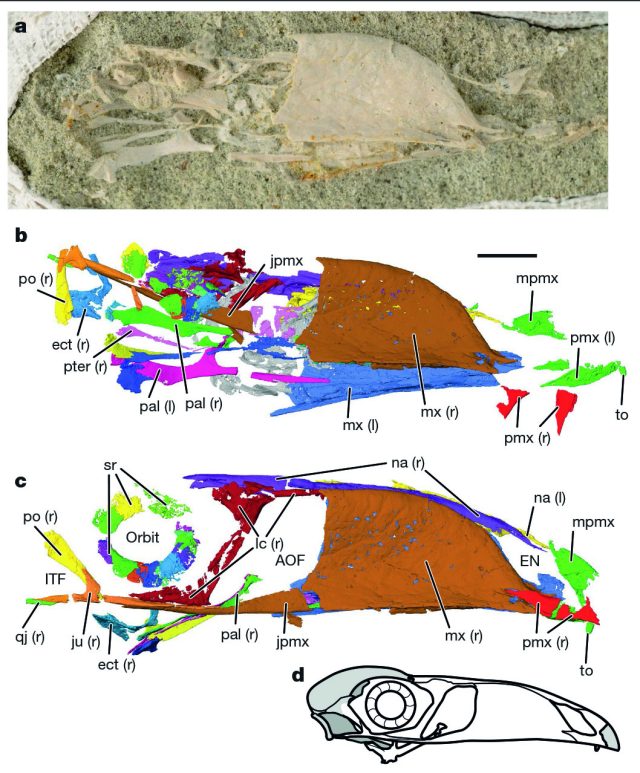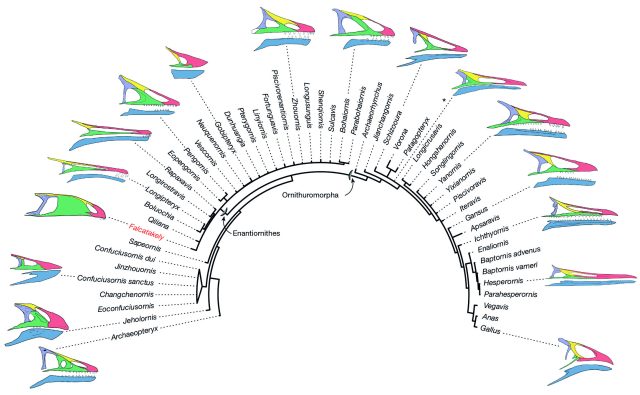The Beaky Finders —
This creature lived long before modern birds evolved large beaks.
Scott K. Johnson
–

Enlarge / Artist’s depiction of Falcatakely forsterae.
Given the unusual attention granted to turkeys this week, let’s talk dinosaurs. Today’s birds are, of course, descendants of the only branch of the dino tree that made it through the end-Cretaceous mass extinction. In the dinosaurs’ halcyon days, the early birds were a bit different, still retaining teeth and foreclaws among some subtler anatomical differences with their modern descendant. A new fossil find reveals an unexpected bird from that time—one with a whopping, great toucan-like beak.
The fossil, named Falcatakely forsterae, comes from late Cretaceous rocks in Madagascar. Many of the early bird fossils we’ve discovered so far come from older, early-Cretaceous rocks in China, with the timeframe between then and the end-Cretaceous extinction more of a question mark. The new fossil is a nicely preserved head of a crow-sized bird with a strikingly long, tall and narrow beak.
The early Chinese bird fossils don’t show much diversity in beak shape. That’s a big contrast with modern birds, which have a wild variety of beak shapes befitting their many different ecological niches. Pelicans, woodpeckers, and parrots have very different diets that require a beak adapted to the job. It had been thought that enlarged beaks may not have been possible until some anatomical shifting in the parts of the skull took place, meaning that the early birds were simply limited. But the new find shows that wasn’t entirely true. This species could have inhabited an ecological niche that was empty after the extinction—until a more modern bird drifted back into it much later.

Enlarge / The fossil (a), identifications of each structure (b), and those structures laid out in their likely positions (c).
The researchers used 3D imaging to precisely determine the dimensions of each anatomical component. That showed some differences compared to both non-bird theropod dinosaurs or more modern birds. The fossil critter may have ended up with an overall beak shape similar to some modern birds, but that’s despite the fact that the underlying structure is different.
There are some visible teeth near the tip of the beak rather than farther back, like its relatives. And the height of its upper beak is achieved through a very large maxillary bone (brown in the image above), where other fossilized species from this time had a thin, more V-shaped bone. Modern birds, on the other hand, have tiny maxillary bones and beaks supported by a large premaxillary bone (green near the beak tip in the image above).

Enlarge / Skull structure for pre-Cretaceous-extinction fossil birds (including this fossil, marked in red). Lower right is a modern bird (junglefowl) for comparison.
If there is one oddball Cretaceous bird, there could well be others, adding more diversity to the Cretaceous collection. The find also raises interesting questions about the evolution of skull structure and beak shape, given that the modern anatomy was apparently not required for a large beak of that shape. That takes a simple story and complicates it somewhat, given that the same form evolved at different times and in different ways.
And that’s good. Surprising fossils are even more fun than the unsurprising ones, further enriching our picture of the past.
Nature, 2020. DOI: 10.1038/s41586-020-2945-x (About DOIs).

